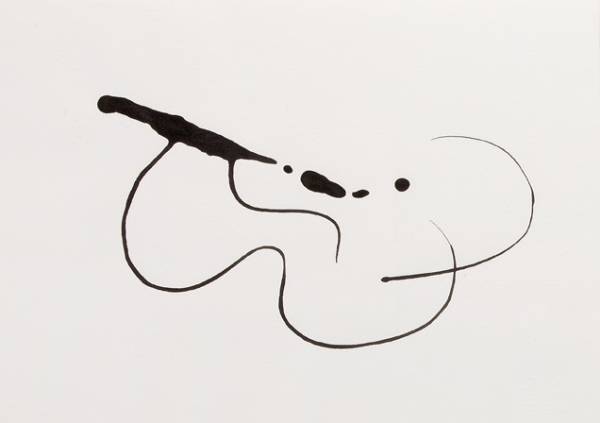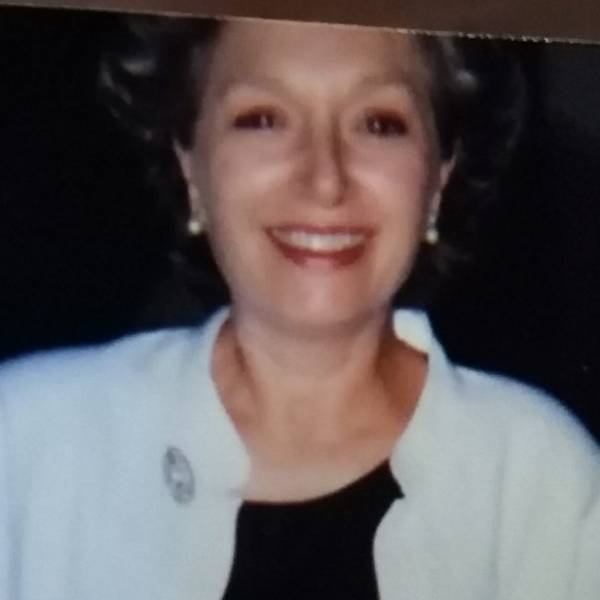
 Adriana Pedone
Adriana Pedone
Ginevra Sanfelice Lilli comes to terms with the world but in the universe she seeks words, poetry and dreams. Ginevra lives and works in the heart of Rome, near the Tiber River, in a house that can only be reached by going up steep, winding stairs. Upon entering, books, albums and boxes abound (one can tell that she has recently moved), along with food and thoughts awaiting to be cooked to perfection!
From the windows the slow flow of the green river together with trees and the sounds of the Eternal City can be heard. We start looking at drawings, reading poetry: how long has it been since we've last met? There are so many things to say.
From the onset our meeting, we discover we have much to discover and discuss.
We speak endlessly as if our conversation will never subside. When one sets foot in an artist's studio that is also an abode, the surprises are innumerable. One catches a glimpse into traces of daily life made up of objects, furniture and armchairs that one never imagined could belong to a person we thought of abstractly with a singular dedication to her creative endeavors. But in Ginevra's work, real and imaginary life intertwine, elaborating a long tale with her poems and notional, extraordinary drawings: black ink and bright colors that seem entangled in an unrepeatable dance.
In her book An Ordinary Journal, this very personal sign reoccurs in order to articulate a discourse made hand in hand with poetry, which is not only touching but also full of pain and song; one is thrust into an orbit that is ultimately unknown to us.
Spring
By Ginevra Sanfelice Lilli
Look at the Tiber,
it wants to escape.
and yet it’s still there.
It is running, we’re running,
parallel to its course.
Spring
is in the puddles.
It’s a crooked sneeze,
in a shudder of contentedness.
Rome, March 20, 2013
(Translation by Jehanne Marchesi)
Interview with Ginevra Sanfelice Lilli
Adriana Pedone (AP): How did you come to discovery poetry and drawing?
Ginevra Sanfelice Lilli (GSL): I started writing by keeping a diary as a child. It wasn't enough for me, it seemed to me that I was defeated, but it soon became a crutch, a secure footing, a way to express myself.
AP: What seemed more complex to you, the world or yourself?
GSL: Definitely myself, because I am not a very linear person. Writing was transmitted to me, I learned to love it through Laura Lilli, adoptive mother, journalist, writer and literary critic of the Italian newspaper la Repubblica.
She told me the following: “Words are losing strength vis-a-vis images, we need to propel its continuation.” She gave me this idea before she died and I continued with writing and suddenly began to combine poetry and drawing. Before Laura's passing I had prepared an exhibition of drawings that coincided with the release of Diario ordinario [An Ordinary Journal], a collection of my poems published by Marco Saya Edizioni in 2014. Laura saw this exhibition and I’m very happy that she was able to.
AP: Would you say she passed the baton to you?
GSL: She told me that I would be her pen on this earth. Buoyed by Laura's words, I began to put words and images side by side.
AP: Although diverse, drawings and words mirror each other as if caught in a close kinship.
GSL: Precisely, but there are difficulties in placing them side by side. However, if you manage to achieve deep concentration and your thoughts flow as if by magic, drawing and poetry become like a third state of mind.
AP: You use annotation a lot.
GSL: I take notes on everything in my notebooks. It’s equivalent to freedom. I have learned to express myself. That said, I love to have a theme; you know, it’s not as if one sits down and goes ahead like the wind! I have a simple method: I write day in and day out. I write anywhere and everywhere. I always carry pen and blank white paper with me. The latter tends to leads itself towards drawing. I prefer to write by hand because it leaves the imprint of the hand’s pressure, a clear mark of life. Lately, I have omitted titles in order to allow the reader the liberty to formulate their own personal interpretation.
AP: Is Diario ordinario [An Ordinary Journal] an autobiographical text?
GSL: Not entirely, there is the relationship between ideas and emotions. Writing has the following main function for me: It allows me to discover things about not only myself, but also the world in general.
AP: It’s a beautiful book. That said, what are you currently working on?
GSL: I dwell upon the invisible, mental illness and madness and I would like to try to imagine it with different materials, even fabric. This is my current project. I feel I have many things to discover.
AP: Could you elaborate a bit about the invisibility of mental disorders?
GSL: Only those who suffer from them or are close to those that do know about them. Today, scientific research has made great advancements, things have improved compared to the past, but we are constantly searching for the right doctors for each disorder. We don’t talk about this enough. It’s as if we have to hide or even worse be ashamed of a disease that is like all others capable of afflicting human beings.
AP: What do you intend to do about it in the immediate future?
GSL: I would like to work on making the invisibility of mental diseases more transparent. In short, make progress and move forward in this direction!
Adriana Pedone
Translated by Amy K. Rosenthal
Riproduzione riservata © Copyright I Parchi Letterari
